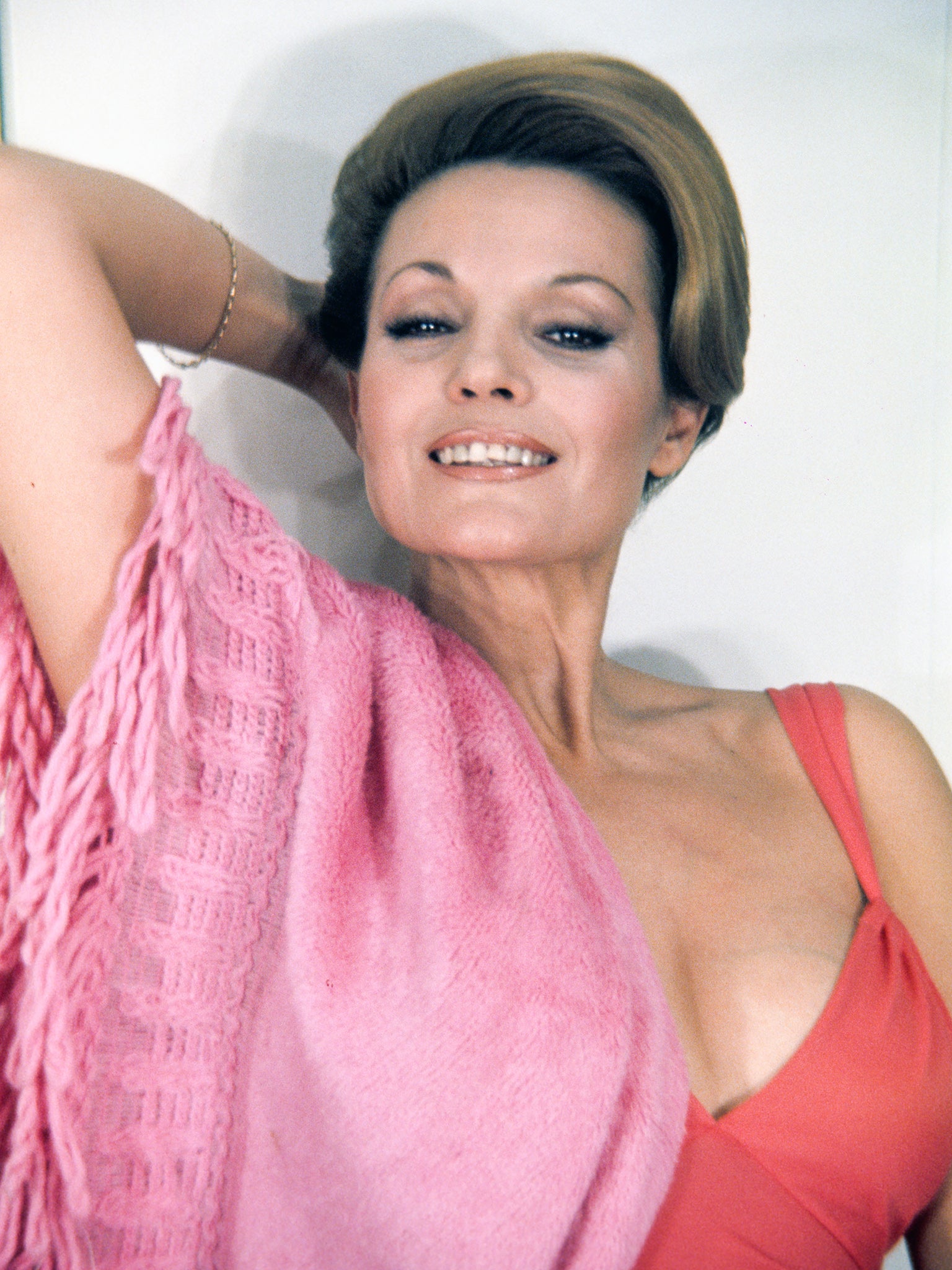Carmen Sevilla: Glamorous queen of Spanish film
Actor, singer and dancer appeared in more than 60 films – including the Oscar-nominated ‘Vengeance’ – before reinventing herself as an affable staple of Spanish television

Carmen Sevilla, a beguiling actor, singer and dancer who became one of the biggest stars of mid-century Spanish cinema, then gained a wider audience playing Mary Magdalene – opposite matinee idol Jeffrey Hunter as Jesus – in the 1961 Hollywood epic King of Kings, has died aged 92.
Sevilla was a glamorous queen of Fifties and Sixties Spanish film, drawing comparisons to actor Ava Gardner with her sculpted features, flowing dark hair and high-arching eyebrows. Admirers nicknamed her “la novia de Espana”, the bride or sweetheart of Spain, and her fans included Pope John XXIII, who sent a congratulatory telegram when she married composer and conductor Augusto Alguero in 1961, at a wedding ceremony that reportedly attracted tens of thousands of people to the plaza outside the cathedral in Zaragoza.
Working primarily in Europe and Mexico, Sevilla appeared in more than 60 movies, starring in musicals including Imperial Violets (1952), with the Spanish tenor Luis Mariano, and dramas such as Vengeance (1958), which was directed by Juan Antonio Bardem and received an Oscar nomination for best foreign-language film.
Early in her career, she prided herself on playing chaste women such as the title character in Sister San Sulpicio (1952), about an Andalusian nun who is barred by her faith from marrying the man she loves (Jorge Mistral). Sevilla sought to maintain that decorous screen persona in her private life and largely steered clear of drama and gossip, as Hollywood columnist Joe Hyams discovered in 1956.
Accompanying Sevilla to a film set near Madrid, he asked a local to explain the actor’s popularity. “In Spain,” he was told, “to be glamorous is to be without scandal. Carmen is untouched by scandal. She is also of the people. She is the perfect woman.”
Many of her films, at least, were far from perfect. Don Juan (1956), a period comedy in which she appeared opposite the French comedian Fernandel, was dismissed as bland and uninspired. Spanish Affair (1957), an English-language drama in which she romanced Broadway actor Richard Kiley, was also coolly received, although American critics were by then praising Sevilla for her acting.
“For generations, Spain’s dramatic favourites have sprung from the people and have sought to retain the common touch. Miss Sevilla has this touch,” the New York Times declared in 1957, for an article on “movie queens” around the world.

A few years later, she was cast in director Nicholas Ray’s King of Kings, a lavish widescreen spectacle filmed in Spain with thousands of extras. The film told the story of Jesus from the manger to the resurrection; Sevilla, as Mary Magdalene, discovered the empty tomb. She later had a supporting role in another English-language epic, playing Octavia in Charlton Heston’s adaptation of Shakespeare’s Antony and Cleopatra (1972). Once again, she didn’t have to travel outside Spain to make the film, although it was so poorly received it was never given a wide release in the US.
As a new generation of Spanish filmmakers tested the limits of state censorship near the end of Francisco Franco’s dictatorship, Sevilla began taking more adventurous roles, including in psychological thrillers such as director Eloy de la Iglesia’s The Glass Ceiling (1971).
But for the most part she found greater success in music, recording coplas, boleros and tangos, often in collaboration with Alguero, her first husband. Near the height of her fame in 1965, she performed one of her husband’s songs, “Estando contigo”, on The Ed Sullivan Show, making what was then a rare appearance for a Spanish entertainer on American television.

Sevilla reinvented herself once more in the early 1990s, becoming an affable staple of Spanish television. She presented shows for three major broadcasters, at times helping to ring in the New Year on-air, and continued to appear regularly until her retirement in 2010 at age 80, the year after she was diagnosed with Alzheimer’s.
“The wife of Spain managed to evolve into the national grandmother, captivating several generations, while many of her contemporaries were forgotten,” journalist Valeria Vegas wrote in a tribute for the Madrid newspaper El País. “For the history of Spanish popular culture,” Vegas added, “she will always be eternal.”
María del Carmen García Galisteo was born in Seville, Spain, on 16 October 1930. After the Spanish Civil War ended in 1939, Sevilla and her family moved to Madrid. Through her father, a songwriter and composer who worked in the movies, she met the actor and singer Estrellita Castro, who became a mentor and helped launch her career.
At 16, she made her film debut with a small role in Spanish Serenade (1947), directed by Juan de Orduna. She landed her first starring role two years later, opposite the Mexican singing star Jorge Negrete in Jalisco Sings in Seville, and was later featured opposite Pedro Infante in You Had to Be a Gypsy (1953) and as the indomitable title character in Shakespeare’s The Taming of the Shrew (1956), with Alberto Closas and music by Alguero, whom she met on the set.
Her other film credits included Desert Warrior (1957), with Ricardo Montalban, and The Balcony of the Moon (1962), with Paquita Rico and the singer and film star Lola Flores, one of her closest friends.
Sevilla’s marriage to Alguero, with whom she had her son, ended in divorce in 1974. In 1985, she married Vicente Patuel, a businessman who owned movie theatres. They settled on a farm near Herrera del Duque, and raised sheep before his death in 2000.
“We lived, we suffered, we laughed,” Sevilla said in 2002, looking back on the rural life she built for herself with Patuel. If it was a departure from her showbusiness career, it was also, she said, “something that was paradise for us”.
Carmen Sevilla, actor and singer, born 16 October 1930, died 27 June 2023
© Washington Post



Join our commenting forum
Join thought-provoking conversations, follow other Independent readers and see their replies
Comments